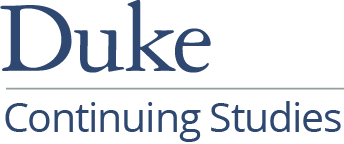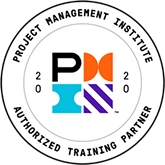Manage Agile Projects Using Scrum
- Traditional Classroom: 2-day
- Virtual Instructor-led: Four 3-hour sessions
Agile project management is a project management methodology based on the idea that projects must be able to adapt to ever changing business needs. To minimize risk, components are built in small, discrete timeframes. There have been several approaches to agile project management over the years. Scrum, the approach addressed in this course, has been used since the early 1990s.
Agile Project Management Using Scrum provides context for what agile project management is, its benefits, and how it differs from traditional project management. It also introduces roles, processes, and techniques to overcome the challenges of working on agile projects.
The course is taught by experienced project managers, and much of the class time is devoted to exercises in which participants can practice the skills being taught. Job aids introduced in the course can be used by participants when they return to the workplace to help them apply their new skills in the performance of job tasks.
Target Audience
Program managers, project managers, and team members interested in applying the Scrum project management approach within their organizations.
Learning Objectives
- Compare and contrast Scrum agile project management with traditional project management.
- Describe the Scrum process framework and how it supports project success.
- Assemble a Scrum team equipped with the knowledge and skills to effectively carry out a software development initiative.
- Initiate a Scrum project by creating a shared vision among team members.
- Elicit, document, and incorporate user stories as an effective means for requirements definition.
- Apply the principles and techniques of Scrum to a software development project.
- Plan a Scrum project by estimating user stories, compiling a project backlog, and measuring progress.
- Conduct effective Scrum meetings and planning sessions.
Course Outline
Module 1: Introduction to Agile Project Management Using Scrum
- Traditional Project Management vs. Agile Approaches
- Benefits of Agile Methods Using Scrum
- Exercise: Identify Agile Scenarios
- Exercise: Review Spectrum Investments Case Study
Module 2: The Scrum Framework
- Scrum Team
- Scrum Process
Module 3: User Roles and User Proxies
- User Roles
- Exercise: Identify User Roles
- User Proxies
- Exercise: Select User Proxies
Module 4: Elicit and Document User Stories
- User Stories That Facilitate Success
- User Story Elicitation
- Exercise: Elicit and Document User Stories
Module 5: Test and Organize User Stories
- User Story Acceptance Testing
- Exercise: Create User Acceptance Tests
- Epics and Themes
- Exercise: Evaluate Epics and Create Stories
Module 6: Estimate and Plan Scrum Projects
- Estimation Using Story Points
- Exercise: Estimate User Stories
- Release Planning
- Exercise: Create a Product Backlog
- Exercise: Create a Release Plan
Module 7: Execute Scrum Projects
- Sprint Planning
- Velocity
- Exercise: Graph Progress
Module 8: Monitor and Control Scrum Projects
- The Scrum — Start to Finish
- Exercise: Participate in a Daily Scrum
- Scrum Success Criteria
- Exercise: Run a Sprint Review Meeting
- Exercise: Run a Sprint Retrospective Meeting
- Exercise: Determine Scrum Team Dynamics
MDP389 Course Code
Want to learn more about Manage Agile Projects Using Scrum? Tell us about your interest in corporate training!
For more information on this topic, as well as how Corporate Education Group can help power your organization’s performance, contact us via email or call 1.800.288.7246 (US only) or +1.978.649.8200. You can also use our Information Request Form!






